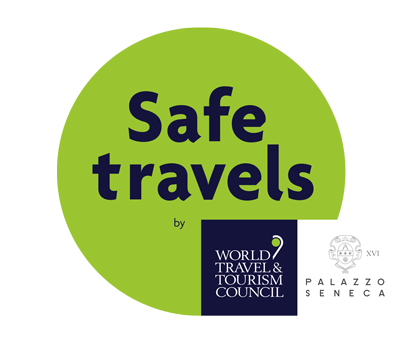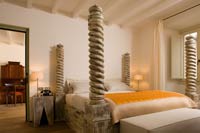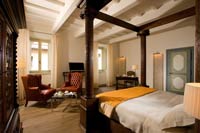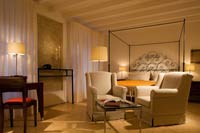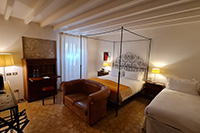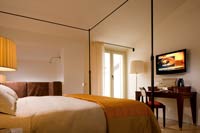History
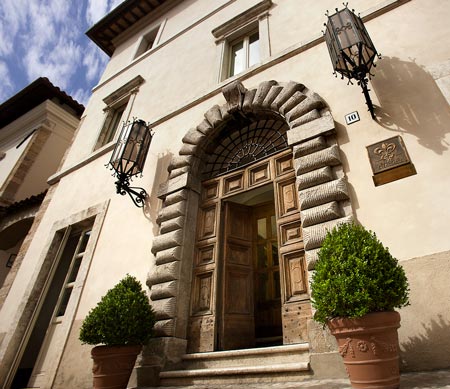 Palazzo Seneca was built in the 16th century by the homonymous family from Piedivalle, a town near Preci, whose inhabitants were famous as skilled wood carvers. Among their works is the wooden choir of the Basilica of St. Benedict, which no longer exists in the church, and the choir in the Abbey of St. Eutizio.
Palazzo Seneca was built in the 16th century by the homonymous family from Piedivalle, a town near Preci, whose inhabitants were famous as skilled wood carvers. Among their works is the wooden choir of the Basilica of St. Benedict, which no longer exists in the church, and the choir in the Abbey of St. Eutizio.
Inside is a large stone fireplace dating back to the 16th century, topped by the family crest which depicts a bar in the middle of which rests a compass and, under it, three roses. Compass and bar are a symbol of the guilds the family belonged to. Palazzo Seneca was the first hotel in Norcia and among the first in Umbria as it opened in the early 1900s. The residence has undergone several changes over time but it still maintains intact, on the ground floor, the features of the vaulted rooms typical of the 16th century.
The structure underwent a major restoration following the earthquake of 1997 that ended with the reopening in June 2008, when the hotel went back to being one of the most beautiful monuments of Norcia. Palazzo Seneca is considered a very safe building from a seismic point of view.
It has passed all the tests carried out by technicians from the Civil Protection Agency and by a highly skilled team of engineers and technical experts following the earthquake that has hit all of central Italy since August 24th 2016.
The Relais & Châteaux Palazzo Seneca was declared "fully habitable".




